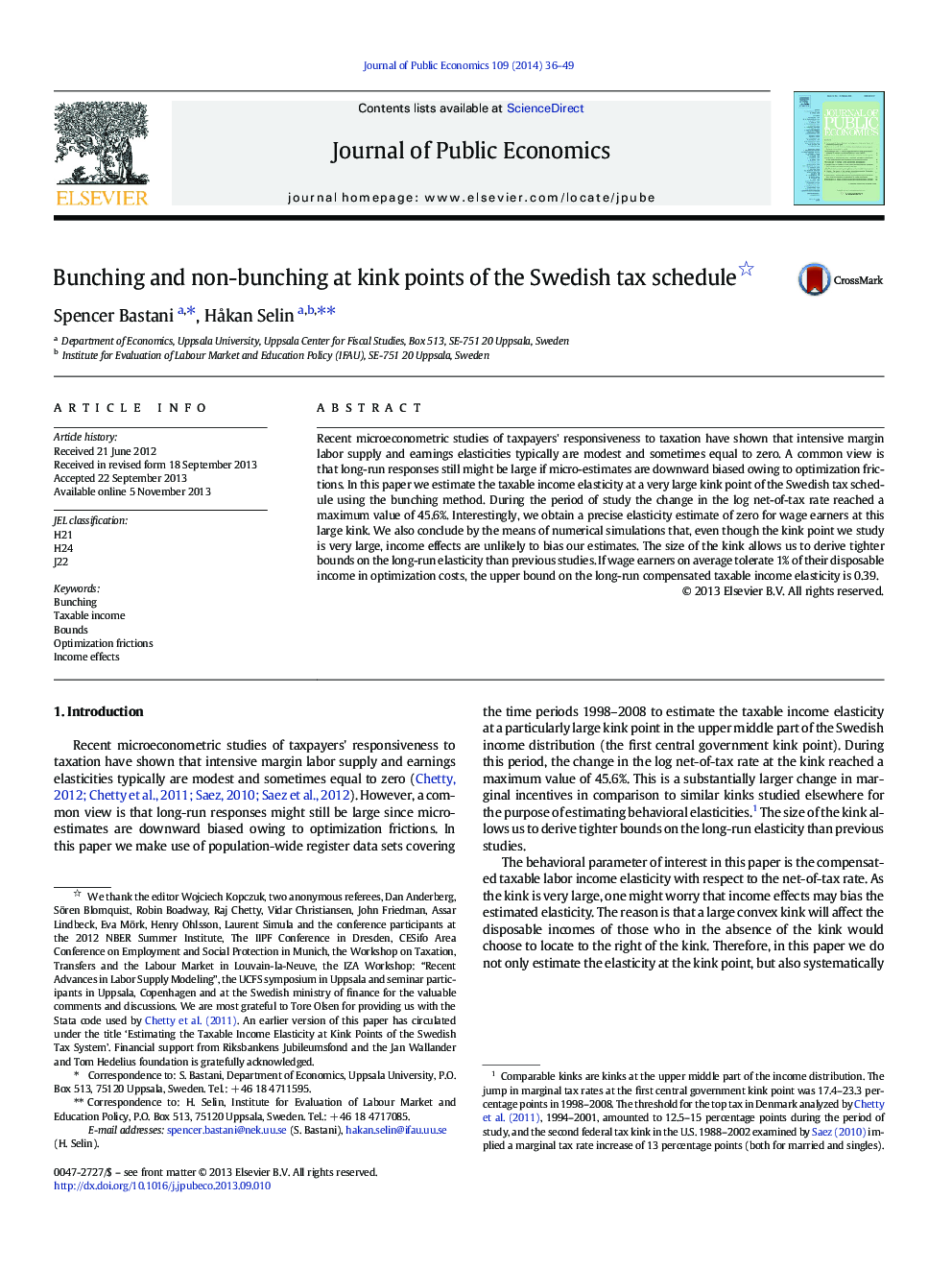| Article ID | Journal | Published Year | Pages | File Type |
|---|---|---|---|---|
| 968691 | Journal of Public Economics | 2014 | 14 Pages |
Recent microeconometric studies of taxpayers' responsiveness to taxation have shown that intensive margin labor supply and earnings elasticities typically are modest and sometimes equal to zero. A common view is that long-run responses still might be large if micro-estimates are downward biased owing to optimization frictions. In this paper we estimate the taxable income elasticity at a very large kink point of the Swedish tax schedule using the bunching method. During the period of study the change in the log net-of-tax rate reached a maximum value of 45.6%. Interestingly, we obtain a precise elasticity estimate of zero for wage earners at this large kink. We also conclude by the means of numerical simulations that, even though the kink point we study is very large, income effects are unlikely to bias our estimates. The size of the kink allows us to derive tighter bounds on the long-run elasticity than previous studies. If wage earners on average tolerate 1% of their disposable income in optimization costs, the upper bound on the long-run compensated taxable income elasticity is 0.39.
